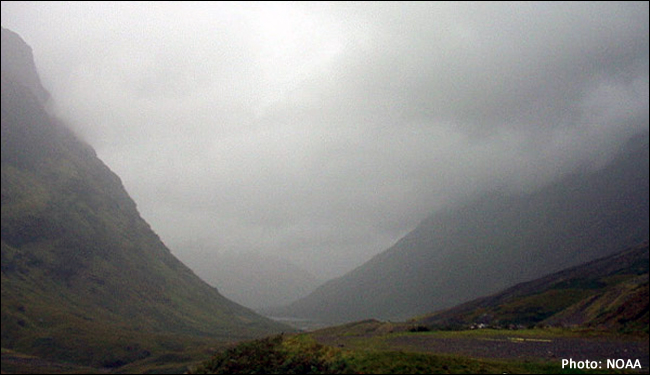
Mountain tops jutting skyward out of the fog can be a beautiful sight, but it can also be dangerous for travelers. One moment your view is clear and the next you have driven into dense fog. There are two ingredients that add to the formation of fog in areas of variable terrain.
First, overnight, the ground cools as the heat that was gathered from the sun’s rays during the day is released back into the air near the ground level. The denser, cooler air on mountain-tops sinks into valleys, and collects there.
Second, over the course of the night, the valley begins to fill from the bottom with cold layers of air. This phenomenon is known as “cold air drainage.” This cooler air lowers the surrounding air temperatures closer to the dew point and subsequently saturation. If there is sufficient moisture in the air, fog will begin to form in these valleys as the night progresses. This type of fog is most commonly observed in the autumn and spring months, and is densest around sunrise when surface temperatures are often lowest.